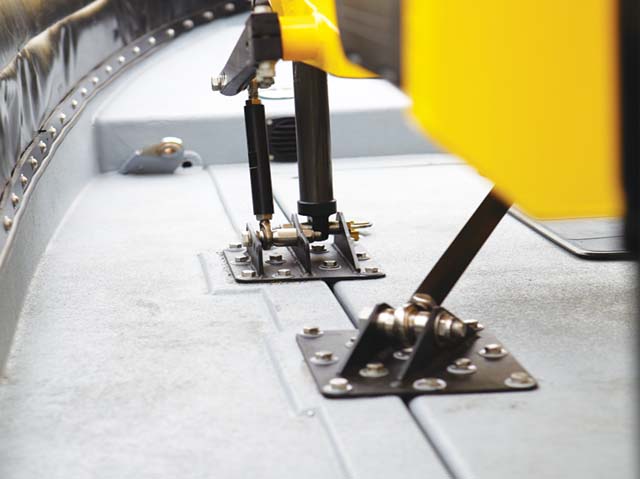When Ryan Pratt purchased a Sea Tow franchise in Jensen Beach, Fla., the deal included only one boat from the previous owner.
“I decided that I needed purpose-built boats, but I couldn’t afford them,” he said. So when he discovered government surplus RIBs online, he decided to buy two and rebuild them himself.
The fiberglass, 7.3-meter RIBs (24'×9') were originally built by Willard Marine in 1995 and were powered by Konrad Marine inboard/outboards. Pratt and his team pulled the Konrads and built a 32" hull extension that added to the running surface and provided a platform to mount twin outboard engines.
“I built the first one like that with a standard center console. It was a phenomenal performing boat, so we decided to do a follow-up boat, and in the process I started a conversation with Seastar Solutions who wanted to try the Optimus 360 steering in a commercial environment.”
That started the ball rolling and the process picked up momentum as Pratt continued to add vendor sponsors and Sea Tow decided to celebrate the project as part of its 30th anniversary last year.
One of the key elements of the rebuilt boat is the twin 150-hp Mercury outboards.
“It’s what they call the workingman’s engine,” said Pratt. “It’s a true four-stroke 150 with 3-liter displacement, which is unheard of for a 150 horsepower engine. It’s more akin to a diesel engine. You’ve got the same displacement as a 250, so you’re running the engines with a comparatively light load that will prolong its life, even at wide open throttle.”
Pratt also praises the ease and cleanliness of the engine maintenance, which is enhanced with QR codes on the engines that link to smartphone or tablet videos.
The Seastar Optimus electric power steering can be adjusted for number of turns lock-to-lock and wheel resistance, which provides the right feel and response for both low-speed maneuvering in confined spaces and high-speed operations offshore.
Seastar also supplied the Optimus 360, a joystick control for walking sideways and hovering. “It’s good for one-handed control while passing fuel jugs if it’s too rough to tie off,” he said.
For extra bollard pull, the engines are shrouded with thruster nozzles from Marine Propulsion Technologies.
“They definitely improve directional thrust,” said Pratt, “and the trim response is remarkable. It has reduced the top end a bit, so we’re working on a new propeller to pick up that speed.”
Another key feature of the RIB is the ICE-2 console suspension from Shockwave in British Columbia. With this system, the operator and all controls, electronics, windscreen, T-top-mounted antennas and lightbars move together in three dimensions.
“Until you sit in this console, you can’t understand how nice it is, and how much protection it affords you, especially if you’re out there working every single day, sometimes heading in the direction that everyone else is running away from.”
— Bruce Buls




